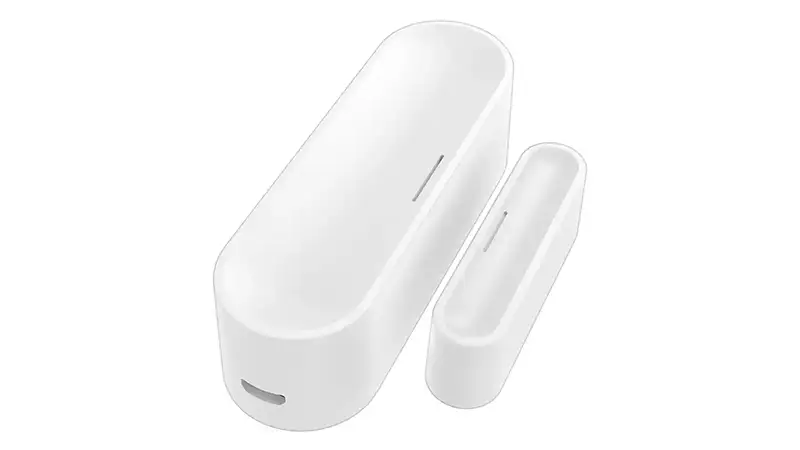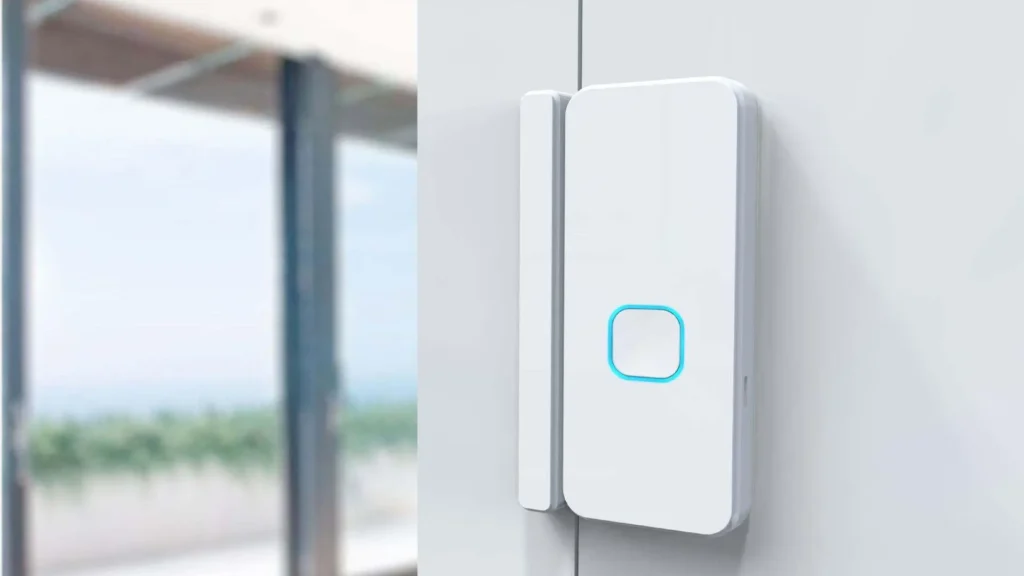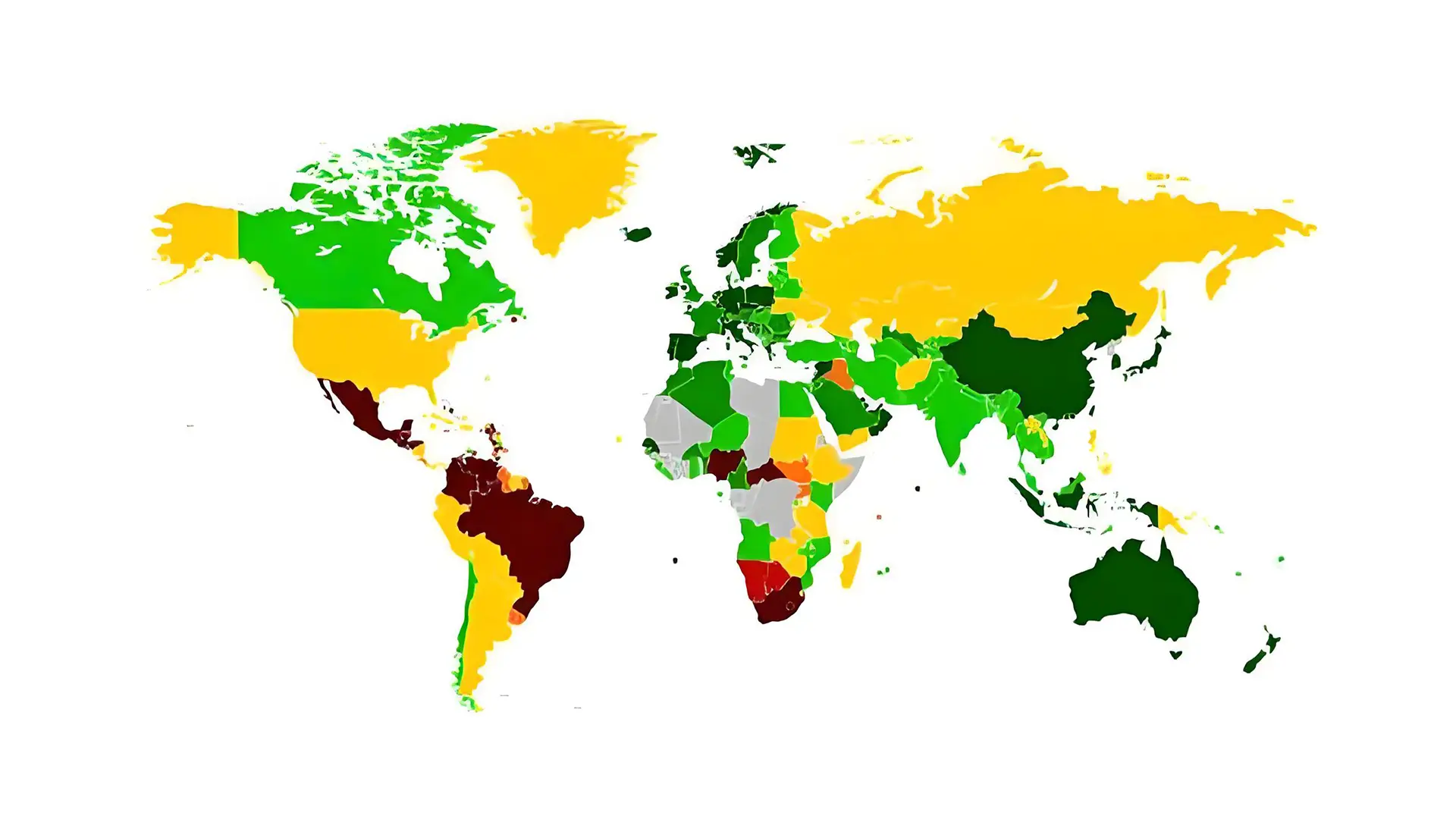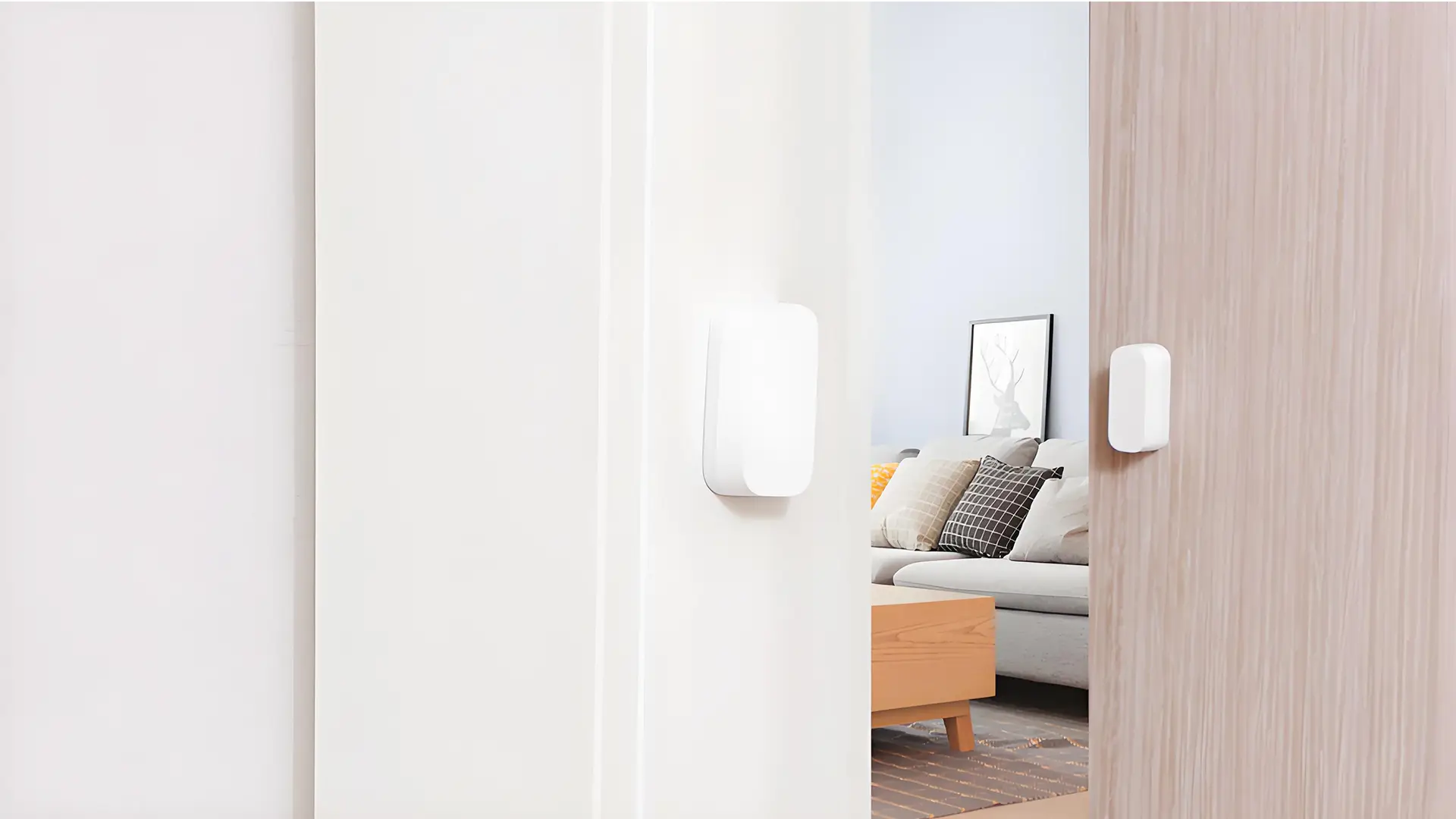But what exactly is a Zigbee door sensor and why do you have to consider installing one at home? This blog post delves into the fascinating world of the Zigbee era and explores the functionality, blessings, and reasonable procedures of door sensors driven by this reliable and efficient wireless voice exchange protocol.
But what exactly is a Zigbee door sensor and why do you have to consider installing one at home? This blog post delves into Zigbee door sensors, understanding their working principles and how to select them.
What is a Zigbee Door Sensor?
Zigbee door sensors are small wireless devices used to detect the opening and closing status of doors and send changes in door opening and closing to users. ZigBee sensors use ZigBee ineffective communication technology, which has the advantages of low power consumption and easy networking.
The core of Zigbee door sensors typically consists of two basic additives:
- Sensor unit: used to detect changes in door opening and closing.
- Communication unit: Send the changes detected by the sensors to the backend.
How Do ZigBee Door Sensors Work?
Zigbee smart door sensors commonly function primarily based at the reed transfer principle. A reed switch is a device product of soft magnetic material that consists of contacts interior. When there may be no magnetic area, those two contacts are separated; When magnetized through a magnetic discipline, the 2 contacts will come into contact, thereby connecting the circuit. In practical programs, magnets are normally constant on doors, whilst reed switch components are fixed on door frames close to the magnets. When the door is closed, the magnet tactics the reed transfer and the circuit is hooked up; When the door is opened, the magnet actions away from the reed transfer and the circuit is disconnected. Through this method, Zigbee door sensors can reveal the on/off fame of doors in real-time.

Technical Features of Zigbee Door Sensor
The Zigbee clever door sensor adopts the Zigbee wi-fi communique protocol, which has the following characteristics:
- Low power consumption: Zigbee gadgets have extraordinarily low electricity consumption in standby mode, making them suitable for packages that run for lengthy intervals of time and are inconvenient to regularly update batteries.
- Low fee:The hardware and software implementation prices of Zigbee technology are relatively low, which allows promote the recognition of IoT devices.
- High potential:Zigbee networks aid a large quantity of device connections, and a master node can manage more than one child nodes, forming a huge-scale wireless sensor community.
- High security: Zigbee provides a couple of safety modes, which includes encryption and authentication mechanisms, to make certain the safety of statistics transmission.
- License unfastened frequency band:Zigbee makes use of license free frequency bands with out the want to use for specific frequency band usage rights, lowering deployment charges.
- Self networking capability: Zigbee devices can automatically network without boot intervention, improving the convenience of network deployment.
How to Choose the Right Zigbee Door Sensor
Compatibility with Your Smart Home Ecosystem
The first step in choosing a Zigbee door sensor is to ensure that it is highly suitable for your current smart home system. A single Zigbee door sensor cannot perform well, so it is crucial to confirm that the sensor is used in conjunction with your precise hub. In addition, check if the sensors are seamlessly integrated with your preferred smart home system, such as Alexa, Google Home, or Apple HomeKit, so that you can create workouts and automate your home correctly. Ensuring compatibility between your devices ensures easy and unified smart home enjoyment.
Range and Connectivity
The connection range of Zigbee devices is within 100 meters, and their connection distance may be affected by environmental factors such as walls and partitions, which can interfere with signal transmission. Therefore, there is ample space for placing Zigbee devices. The communication capabilities of Zigbee devices of different qualities vary. Good Zigbee devices have long transmission distances and strong anti-interference capabilities, so it is necessary to choose Zigbee door sensors with strong signals.
Power Source and Battery Life
Most Zigbee door sensors are battery powered, which makes their battery capacity and power consumption very important indicators. The selected door sensor has a high battery capacity and low power consumption, which can greatly increase the continuous working time of the door sensor. The commonly used battery for door sensors is the CR2032 button battery, which is widely used, easy to purchase, and easy to replace. When purchasing a door sensor, it is important to check its power and other related parameters. Generally speaking, a sensor with lower power is better.
Durability and Build Quality
The construct quality of a door sensor is important, especially if it’ll be exposed to outdoor factors or high-humidity regions like lavatories. Look for sensors crafted from durable, weather-resistant materials to ensure durability. A compact and sleek layout is likewise critical in case you want the sensor to blend into your house’s decor without being obtrusive. For out of doors or rugged use, confirm that the tool meets unique requirements, along with waterproofing or impact resistance.
Features and Functionality
Modern Zigbee door sensors offer more than simply open-and-close detection. Features like real-time alerts make certain you’re notified instantly whilst interest is detected, enhancing safety. Some sensors consist of tamper-detection functions that warn you if a person attempts to put off or disable the tool. Others would possibly provide extra capability, which includes temperature or humidity tracking, which may be beneficial for broader home automation purposes. Choosing a sensor with versatile features can maximize its cost on your clever domestic.
Ease of Installation
For purchasing smart door sensors, simple installation is a very important reference factor. Most Zigbee door sensors are equipped with tape or screws for installation, making the setup process quick and easy. There are curved door sensors available on the market for doors and windows of different shapes. Before selecting a door sensor, it is necessary to observe the shape of the door and windows to ensure that the purchased door sensor can be easily installed.
Budget and Value
When choosing Zigbee door sensors, it is important to fully consider the balance between budget and functionality. Some Zigbee door sensors have many functions but are expensive, while others have relatively fewer functions and are cheaper in price. Before making a purchase, you should consider your budget range, and then consider which features you want, ensuring that the sensors you choose are within your budget and the features you want. In addition, it is also important to understand the manufacturer’s warranty and return policies.
Installation and Setup of Zigbee Door Sensors
Installing a Zigbee door sensor is a truthful procedure, but following the right steps guarantees choicest functionality and reliable overall performance. Here’s a step-by-step manual that will help you deploy and set up your sensor without problems:
- Gather Necessary Tools and Materials
Before you start, check that your Zigbee door sensor bundle includes all required components, which includes the sensor unit, magnet unit, adhesive strips, or screws. You’ll additionally want a Zigbee hub or gateway to attach the sensor on your clever domestic ecosystem. If the installation calls for screws, have a screwdriver or drill reachable.
- Choose the Right Location
The placement of the sensor is critical for accurate performance. Identify a appropriate location on your door and body where the sensor and magnet can align well while the door is closed. Ensure the sensor is within the powerful variety of your Zigbee hub to maintain a solid connection. Avoid putting the sensor close to metallic gadgets or gadgets that would purpose signal interference.
- Prepare the Surface
Clean the set up vicinity thoroughly to ensure the adhesive sticks securely. If you’re the use of screws, mark the spots in which the sensor and magnet may be installed, and pre-drill holes if necessary. A solid and smooth surface enables prevent misalignment or detachment over time.
- Mount the Sensor and Magnet
- Adhesive Installation: Peel off the backing from the adhesive strips and fix the sensor unit to the doorframe and the magnet unit to the door. Press firmly to secure them in vicinity.
- Screw Installation: If screws are furnished, use them to mount the sensor and magnet for a greater durable setup, especially in excessive-visitors areas or out of doors environments.
Ensure the sensor and magnet are aligned correctly and near enough (normally inside a few millimeters) to stumble on whilst the door is opened or closed.
- Pair the Sensor with Your Zigbee Hub
Follow the instructions provided together with your Zigbee door sensor to pair it with your hub. This typically involves the following steps:
- Put your Zigbee hub into pairing mode (consult your hub’s manual for specific commands).
- Press and preserve the pairing button on the sensor till it starts offevolved to blink, indicating it’s ready to attach.
- Wait for the hub to come across the sensor and entire the pairing system.
- Confirm the connection thru your clever home app, and name the sensor for easy identification.
- Test the Sensor
Once the sensor is set up and matched, take a look at its capability:
- Open and near the door to look if the sensor sends notifications or triggers the preferred automation.
- Verify that the sensor remains related to the hub and operates reliably inside its range.
- Check the alignment of the sensor and magnet if the overall performance seems inconsistent.
Use Cases for Zigbee Door Sensors
Zigbee door sensors are quite versatile and might enhance diverse factors of domestic and business environments. Here are a few not unusual and creative use cases wherein Zigbee door sensors shine:
Home Security and Intrusion Detection
Zigbee door sensors are an integral part of a complete security system. They ship real-time alerts for your telephone or hub whilst a door is opened abruptly, helping you reveal your own home remotely. You also can pair them with alarms or clever cameras to deter intruders. For instance, when a sensor detects a door opening for the duration of precise hours, it could cause a siren or start recording via a related digicam.
Automating Lighting
Integrating Zigbee door sensors with clever lights structures provides convenience and power efficiency. For instance, the lighting on your entryway or hallway can routinely turn on whilst the the front door opens, growing a welcoming environment. Similarly, you can program the lighting to show off while the door closes, saving electricity in regions that don’t require continuous illumination.
Child Safety and Monitoring
Parents can use Zigbee door sensors to display when youngsters open doors to potentially unsafe areas, along with front doors, medicine cabinets, or pool gates. Paired with notifications or alarms, these sensors provide peace of mind by making sure children don’t access restrained regions with out supervision.
Pet Monitoring and Automation
For puppy proprietors, Zigbee door sensors can automate puppy-pleasant routines. For example, a sensor on a pet door can cause lighting or cameras to monitor your pet’s movements. It can also notify you while a puppy has entered or exited the residence, ensuring their safety and tracking their activity.
Commercial Security and Access Control
In industrial areas like places of work, warehouses, or retail stores, Zigbee door sensors assist screen unauthorized get entry to. Managers can tune when doors are opened and closed, supplying insights into employee movements and protection breaches. Sensors also can integrate with get right of entry to control structures to control steady regions efficaciously.
Precautions
When the use of Zigbee clever door sensors, the following issues need to be cited:
- Magnetic area interference: Due to the use of soft magnetic substances in door and window sensors, if they’re in a robust magnetic field environment, they’ll be mistakenly categorised as closed. Therefore, it is recommended to avoid placing the sensor near strong magnetic fields throughout set up.
- Iron doorways and windows: If sensors are hooked up on iron doors and home windows, attention need to be paid to the attenuation effect of wi-fi signals, which may additionally reason unreliable communication with the gateway. It is suggested to avoid putting in on iron protection doorways and use non-metal doors and home windows as a lot as possible.
- Vibration effect: The internal contacts of the reed switch are not fixed and might move. Strong vibrations may additionally result in misjudgment. Therefore, it’s miles endorsed to install the reed switch in regions with much less vibration, inclusive of door and window frames.
- Sensing distance: Each model of door and window sensor has an effective distance restriction. During installation, it’s far essential to ensure that the distance among the sensor and the magnet is within an effective variety, in any other case it is able to result in the inability to come across the closed state.
Frequently Asked Questions About Zigbee Door Sensors
What is the range of a Zigbee door sensor?
The range of a Zigbee door sensor typically varies among 10 to 30 meters interior, depending on factors consisting of partitions, interference, and the exceptional of the device. However, Zigbee’s mesh networking permits different Zigbee gadgets to behave as repeaters, extending the general range of your network.
Do Zigbee door sensors work with out the net?
Yes, Zigbee door sensors can feature without the net if they’re related to a nearby Zigbee hub. The communication among the sensor and the hub does no longer require a web connection, but positive functions like faraway notifications or cloud-based automations can also need net access.
How long do Zigbee door sensor batteries ultimate?
The battery life of Zigbee door sensors generally ranges from 1 to 2 years, relying on the frequency of use and the form of battery. Sensors with power-efficient designs or sleep modes tend to have longer battery existence. Most sensors additionally provide low-battery notifications to provide you with a warning while it’s time to replace them.
Can Zigbee door sensors be used outdoors?
Yes, a few Zigbee door sensors are designed for outside use, however it’s important to pick out fashions with climate-resistant or water resistant capabilities. Always take a look at the product specifications to make sure the sensor can face up to outside conditions like rain, humidity, and severe temperatures.
How do I realize if my Zigbee door sensor is well suited with my hub?
Compatibility may be checked by way of verifying the Zigbee version supported through your hub and the sensor. Most hubs and sensors that assist Zigbee 3.Zero are backward-like minded with earlier Zigbee versions. Check the product documentation or seek advice from the producer’s website for compatibility records.
Can I use Zigbee door sensors with a couple of hubs?
Zigbee door sensors are typically paired with a unmarried hub at a time. If you want to attach the sensor to a unique hub, you’ll want to reset the tool and re-pair it with the new hub. Some ecosystems, however, may additionally permit shared manipulate if both hubs are part of the equal smart home platform.
Do Zigbee door sensors require professional set up?
No, maximum Zigbee door sensors are designed for clean DIY installation. They typically come with adhesive strips or screws for mounting and encompass clean instructions for setup. Pairing the sensor together with your hub is likewise a sincere system, requiring no technical knowledge.







